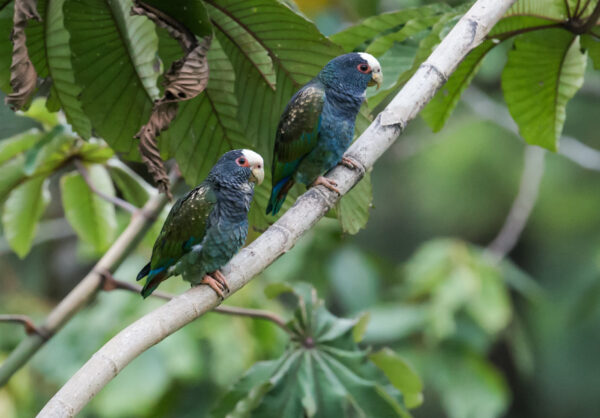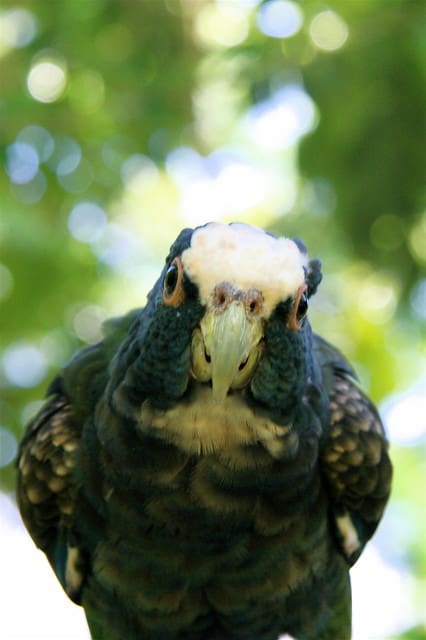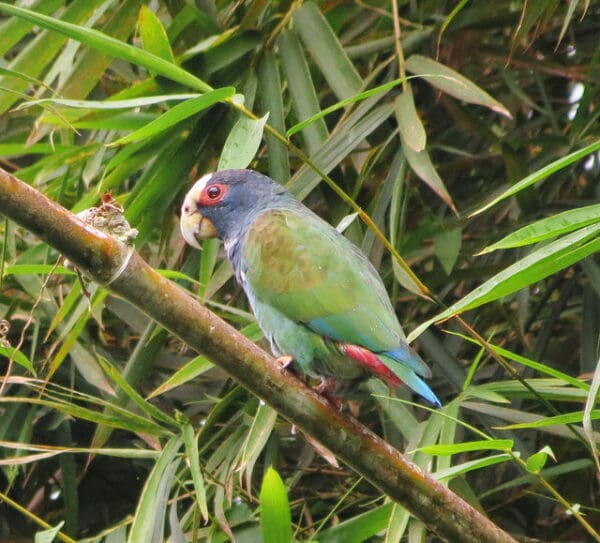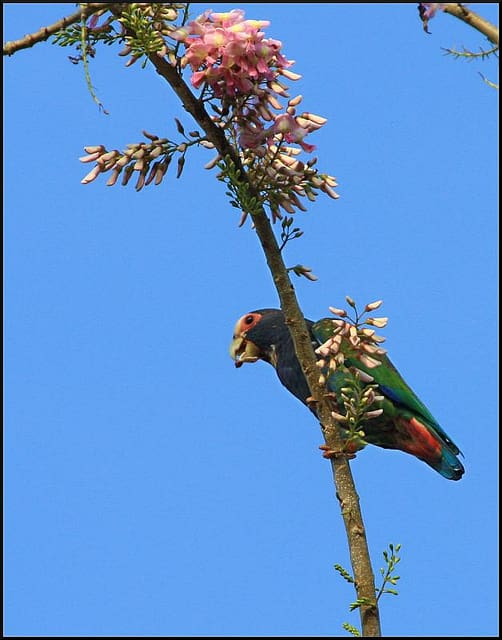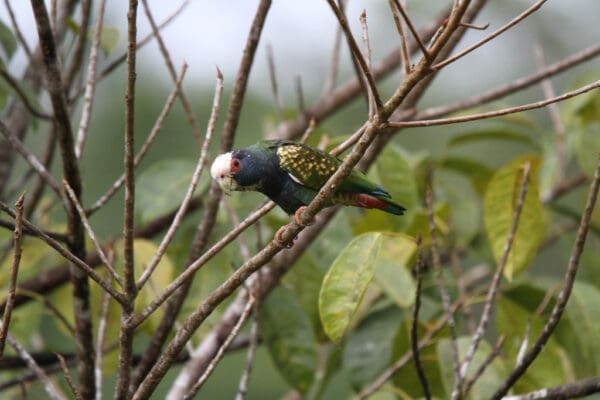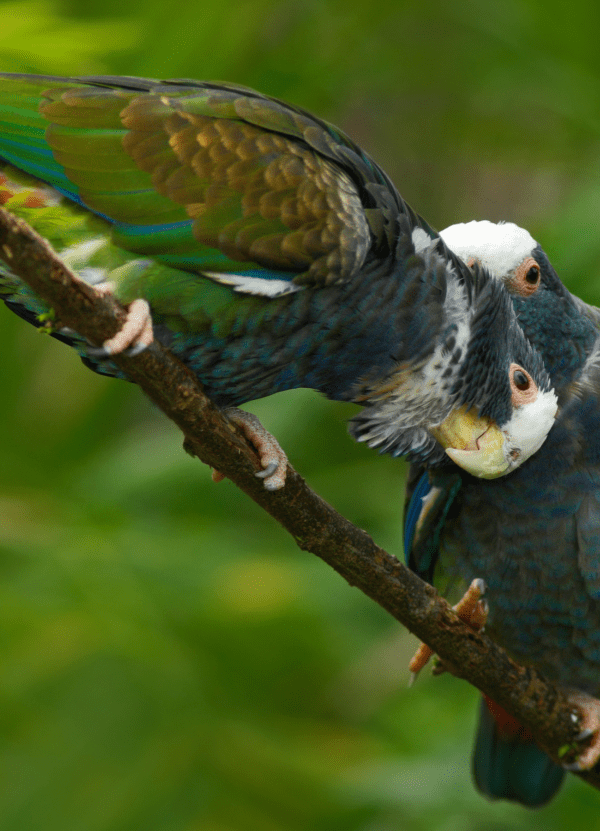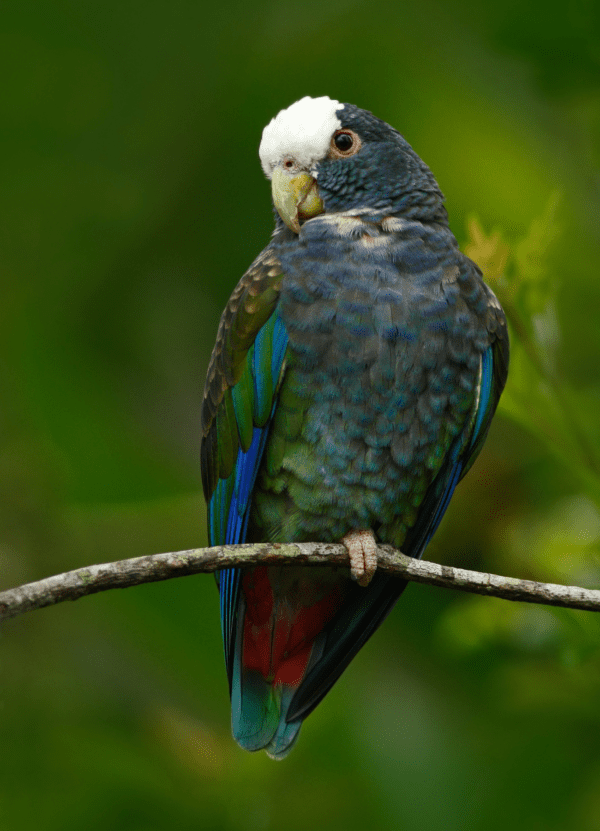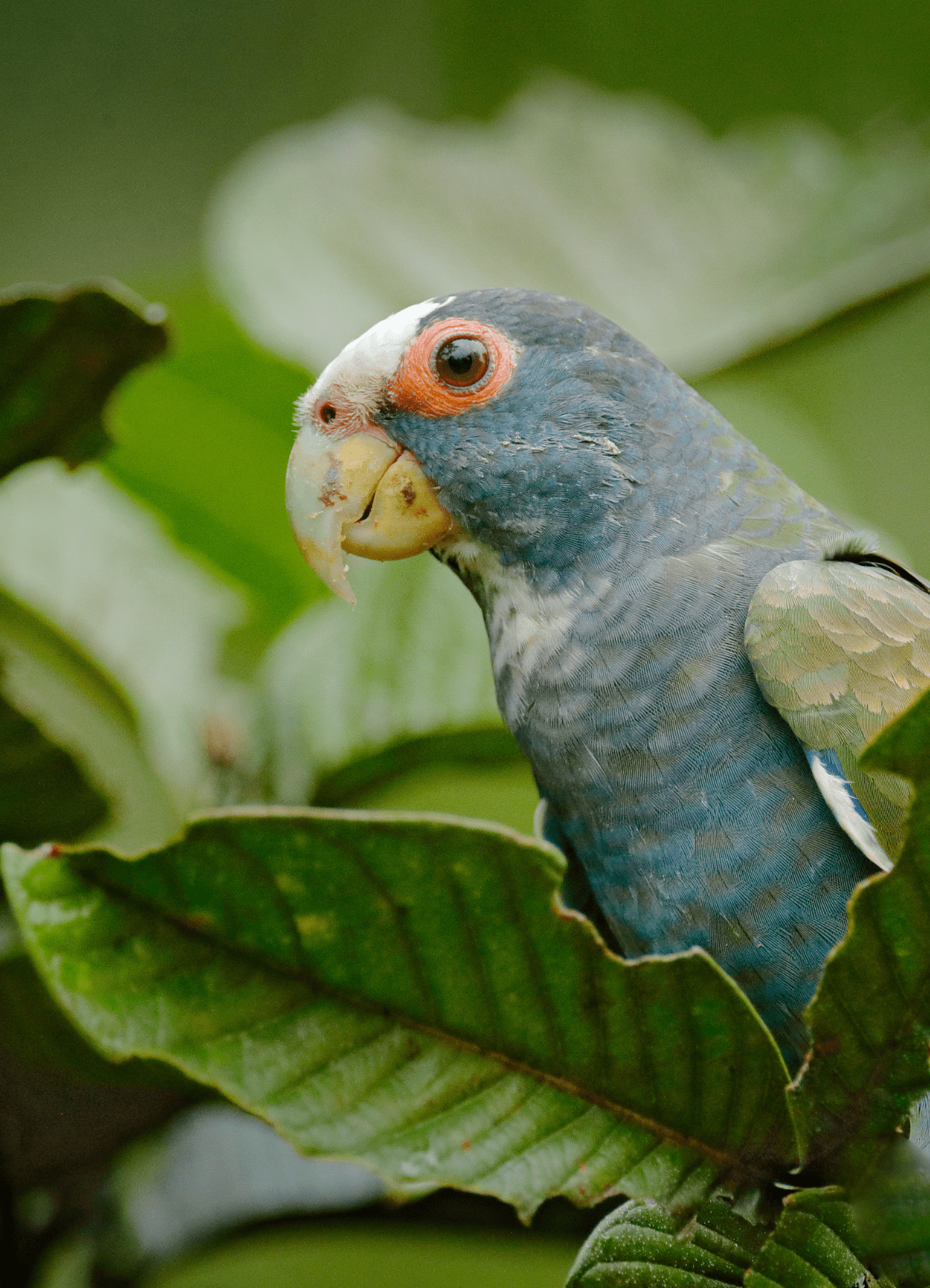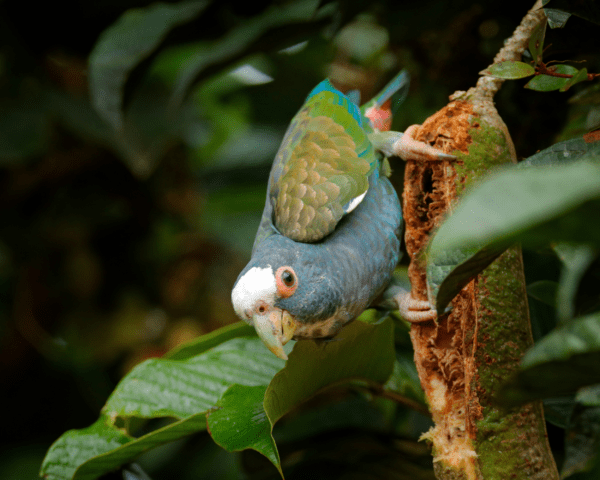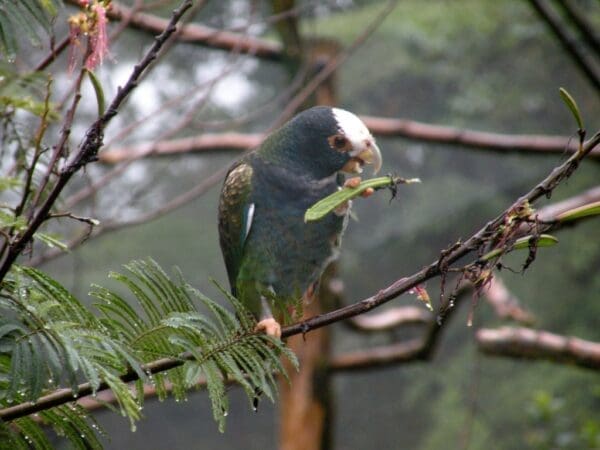![© Nick Athanas [CC BY-NC-SA 2.0] via Flickr Wild White-crowned Parrots perch on a limb](https://parrots.org/wp-content/uploads/1991/01/White-crowned-Parrot-Nick-Athanas-e1731009327315-100x100.jpg)
![© Alan Wolf [CC BY-SA 2.0] via Flickr A curious White-crowned Parrot peers at the camera](https://parrots.org/wp-content/uploads/2023/01/wpt_White-crowned-Parrot_1407-11-100x100.jpg)
![© Paul Bedell [CC BY-SA 2.0] via Flickr A wild White-crowned Parrot perches on a branch](https://parrots.org/wp-content/uploads/2023/01/wpt_White-crowned-Parrot_1407-7-100x100.jpg)
![© RK and Tina [CC BY-SA 2.0] via Flickr A wild White-crowned Parrot feeds on blossoms](https://parrots.org/wp-content/uploads/2023/01/wpt_White-crowned-Parrot_1407-6-100x100.jpg)
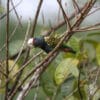

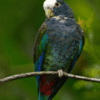
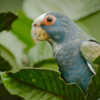
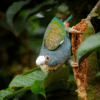

![© Victoria Porter [CC BY-SA 2.0] via Flickr A wild White-crowned Parrot chews on a legume](https://parrots.org/wp-content/uploads/1991/01/White-crowned-Parrot-lg-Victoria-Porter-100x100.jpg)
DID YOU KNOW?
The young of the White-crowned Parrot (or Pionus) make a harsh, rasping sound when they beg for food.

Pionus

senilis
Size:
24 cm (9.3 in)
Weight:
193-229 g (6.7-8 oz)
Subspecies including nominate:
one
Colour Adult:
Both adults in general green with yellow/green on underparts; white forehead and forecrown; white patch on chin and middle of throat; dark blue ear coverts; olive breast, the feathers edged with purple/blue; red under tail coverts; gold/brown lesser and median wing coverts, with dull green at centre; green tail with red at base. Beak green/yellow with grey at base. Eye ring bare and brown/pink. Eye brown.
Colour Juvenile:
Buff/white edging to feathers of green forehead and forecrown; white patch on chin and middle of throat absent; blue edging to feathers of breast minimal or absent; green lesser and median wing coverts, with olive/brown margins; yellow/green undertail coverts. Eye ring bare and white.
Call:
Calls made in flight are continuous and screechy.
More Information:
Content Sources:
CITES
BirdLife International
Cornell Lab of Ornithology/Birds of the World
Parrots: A Guide to Parrots of the World, Juniper and Parr, 1998.
Parrots of the World, Forshaw and Cooper, 1977.
Parrots of the World, Forshaw, 2006. 2010 edition
Lexicon of Parrots, Thomas Arndt.
Parrots in Aviculture, Low, 1992.
Captive Status:
Common in US; less so elsewhere.
Longevity:
30 yrs
Housing:
Aviary or suspended enclosure, minimum length 2 m (6.5 ft).
Diet:
Fruit such as: apple, pear, orange, banana, pomegranate, cactus fruits, forming about 30 percent of the diet; vegetables such as: carrot, celery, green beans, peas in the pod; fresh corn; green leaves such as: Swiss chard, lettuce, sowthistle, dandelion, chickweed; spray millet; small seed mix such as: canary, millet and smaller amounts of oats, buckwheat, safflower and a little hemp; soaked and sprouted sunflower seeds; cooked beans and pulses and boiled maize; complete pellet.
Enrichment:
Provide bathing misters or bowls; toys such as bird-safe wooden toys, ladders, swings, ropes, play gyms, foraging/puzzle toys, vegetable tanned leather chewable toys; fir, pine, elder and willow branches and different sized perches.
Nest Box Size:
Vertical box 9.5″ x 9.5″ x 20″ (24.1 cm x 24.1 cm x 50.8 cm).
Clutch Size:
4-6
Fledging Age:
8 weeks
Hatch Weight:
—
Peak Weight:
—
Weaning Weight:
—
World Population:
50,000-500,000 mature individuals, decreasing.
IUCN Red List Status:
Least Concern
CITES Listing:
Appendix II
Threat Summary:
Not globally threatened. Is generally common, especially in Costa Rica, even in urban outskirts. Possibly now extinct in W Nicaragua due to extensive habitat loss. Naturally uncommon at the edge of its range in Panama. Tree cover loss within its range is 16% over three generations. Apart from forests the species also occurs in plantations, woodland, savanna, agricultural areas and open habitat; consequently, population declines may be slower than the rate of tree cover loss suggests. The impact of trapping on the population size has not been quantified, but it is assumed to be low. Tentatively, population declines are here placed in the band 1-19% over three generations.
Range:
C America, mostly Caribbean slope from S Tamaulipas and E San Luis Potosi, SE Mexico, to C Costa Rica, and both slopes from C Costa Rica to W Panama, in W Chiriqui and W Bocas del Toro.
Habitat:
Found up to 2300 m (7544 ft) in mainly humid forest and woodland but also in local pine-oak forests, savanna and moist lower montane growth. Also has been reported from woodland and forest edge, cultivated areas and pastures with scattered trees, plantations, secondary growth and wooded streams.
Wild Diet:
Feeds on ripening seeds of Inga and Erythrina; palm fruits, Dendropanax and sometimes cultivated crops.
Ecology and Behaviour:
Found mainly in pairs or small flocks outside of breeding season. Occasionally seen in large groups of several hundred. Feeds mainly in canopy.
Clutch and Egg Size:
4-6 broadly elliptical eggs, 35.0 x 25.5 mm (1.4 x 1 in).
Breeding Season:
March, Mexico; January-April, Costa Rica; February-May, Belize. Nest is in palm stump or tree cavity.
Related Links:
—
